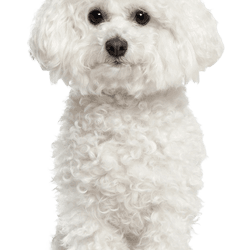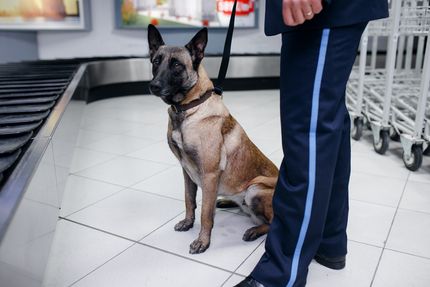Facts & Origin
Afghan Chon (Afghan Hound and Bichon Frisé Mix)
The Afghan Chon is a fascinating hybrid breed created by crossing the majestic Afghan Hound and the charming Bichon Frisé. Both parent breeds have a long and rich history, which is reflected in the diverse characteristics of their offspring.
Suitability and Husbandry
The suitability of the Afghan Chon depends greatly on his individual character. He can do well in active families as well as with individuals. His adaptability and loving nature make him a good fit for a variety of living conditions, from city life to country living.
| Alternate Name | - |
| Origin | Afganistan - France |
| Life expectancy | 12 - 15 years |
| Care requirements | high-maintenance - low-maintenance |
| Activity level | average - low |
| FCI group | not recognised |
| AKC group | not recognised |
| KC group | not recognised |
More Afghan hound mixes
More Bichon Frisé mixes
Attitude, character and temperament of the breed
Possible character traits
The Afghan Chon combines the best characteristics of the Afghan Hound and the Bichon Frisé. He is known for his lively and friendly personality. His intelligence, combined with a natural sense of curiosity, makes him a great companion that is easy to train. Despite his playful nature, he can also inherit the Afghan Greyhound's independent and sometimes reserved temperament.
Overall, the Afghan Chon is a friendly, intelligent and adaptable dog that makes an excellent family companion. His distinctive blend of temperament and appearance makes him a unique and valuable addition to any family. With enough care, exercise and love, the Afghan Chon will be a loyal and loving companion.
Character
Usage
Care and health
As far as grooming is concerned, the Afghan Chon requires regular grooming due to its long and dense coat. At least weekly brushing is required to prevent tangles and keep the skin healthy. His ears should be checked and cleaned regularly to prevent infections.
In terms of health, the Afghan Chon may be prone to some of the health problems found in his parent breeds, including hip dysplasia, allergies, and eye problems. Regular veterinary checkups and a balanced diet can help prevent or control these problems.
What does this mixed breed look like?
In terms of appearance, the Afghan Chon has a unique appearance, which is a combination of the characteristics of both parent breeds. Of medium size, this mixed breed can reach a shoulder height of 30 to 68 cm and a weight between 10 and 27 kg. Its coat is usually long, dense and wavy, in colors ranging from white to cream to gold, and requires regular grooming.
| Fur length | long - short |
| Fur | flat coated - curly |
| Ear shape | Floppy Ear |
| Tail | lang - fanned out |
| Anatomy | slim, sporty, dainty |
| Size ♀ | 23 - 69 cm |
| Weight ♀ | 3 - 30 kg |
| Size ♂ | 23 - 74 cm |
| Weight ♂ | 3 - 30 kg |
| Suitable For | Children, suitable for allergy sufferers, Children |
Known Diseases
Hip dysplasia (HD)
Hip dysplasia (HD) is a genetic condition in dogs where the hip joint is not shaped properly. This leads to pain, stiffness and restricted movement.
Cataract
Cataracts are still one of the most common causes of blindness, even in dogs.
Myelopathy
Degenerative myelopathies of dogs are a series of slowly progressing neurological diseases associated with destruction of the spinal cord. These diseases are associated with slowly progressive movement disorders of the hindquarters.
Eye diseases
Often occur with allergies and intolerances.
Patellar luxation
Patellar luxation is the term used to describe a displacement of the kneecap, which is one of the most common causes of lameness in dogs.
FAQ
-
This hybrid breed is usually between 30 to 68 cm tall.
-
This hybrid breed has a long, dense and wavy coat, in colors ranging from white to cream to gold.
-
These mixed breeds are very sociable, friendly and playful dogs. They love to spend time with their humans.
-
This hybrid breed is suitable for all types of habitats. They are very adaptable and can live both in an urban environment and in the countryside.
-
This hybrid breed requires gentle, patient training. Positive reinforcement is the key to success. Care should be taken to keep tasks short and varied to help the learning process.





















